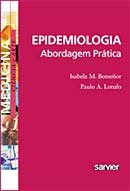The New England Journal of Medicine enviou email, hoje (14:00) aos assinantes indicando a disponibilidade de artigo original mostrando risco maior de evento cardiovascular com a rosiglitazona - Avandia - comercializada pelo Glaxo Smith-Kline. O texto e editorial estão em http://www.nejm.org com acesso livre e a resposta da empresa já foi postada em http://www.gsk.com. Não consegui ler além do abstract, por isso recomendo - como sempre - os textos originais. Abaixo, um resumo da ação da rosiglitazona retirado do UpToDate.
INTRODUCTION — Two classes of oral hypoglycemic drugs improve insulin action: biguanides and thiazolidinediones ). Two thiazolidinediones (rosiglitazone [Avandia] and pioglitazone [Actos]) are currently marketed in the United States. A third, troglitazone (Rezulin), was the first drug in this class to be marketed, but was removed from the market in both the United States and United Kingdom because it caused liver dysfunction and, in some patients, liver failure. The pharmacology and use of thiazolidinediones will be reviewed here. Biguanides (only metformin is currently available) and other oral hypoglycemic drugs are discussed separately. (MECHANISM OF ACTION — The thiazolidinediones increase insulin sensitivity by acting on muscle and liver to increase glucose utilization and decrease glucose production . The mechanism by which the thiazolidinediones exert their effect is not fully understood. They bind to and activate one or more peroxisome proliferator-activated receptor-gamma (PPARs), which regulate gene expression in response to ligand binding. PPAR-gamma is found predominantly in adipose tissue, pancreatic beta-cells, vascular endothelium and macrophages. PPAR-alpha is expressed mostly in liver, heart, skeletal muscle and vascular walls. Fibric acid derivatives (like gemfibrozil and fenofibrate) regulate lipoprotein metabolism by acting as PPAR-alpha agonists. The various thiazolidinediones have differential effects on PPAR-gamma and PPAR-alpha. Troglitazone and rosiglitazone are purely PPAR-gamma agonists, while pioglitazone also exerts some PPAR-alpha effects. This may account for the different effects that pioglitazone and rosiglitazone have on lipids (see below). The concentration of PPAR-gamma is increased in the skeletal muscle of obese and diabetic patients; the raised concentration correlates well with the serum insulin concentration. It appears that the thiazolidinediones improve insulin responsiveness in skeletal muscle in patients with by facilitating glucose transport activity, thereby increasing rates of muscle glycogen synthesis and glucose oxidation. They may improve blood glucose levels both by improving insulin sensitivity and also by preserving pancreatic beta-cell function. If they improve cardiovascular outcomes, as has been suggested, it may be through effects on lipoprotein metabolism and/or by other effects on vascular tissues. The Food and Drug Administration has approved rosiglitazone (2 to 4 mg twice daily) and pioglitazone (15 to 45 mg once daily) for monotherapy or with a sulfonylurea, metformin, or insulin (although there are concerns with combinations of thiazolidinediones and insulin, see below). Several new thiazolidinediones are being investigated as "dual PPAR agonists," with the anticipation that they could effectively treat both hyperglycemia and hyperlipidemia. One dual agent, muraglitazar, received initial FDA approval but data reinterpretation has led to concerns about cardiac safety. Patients who took muraglitazar had an increased incidence of a composite outcome of death, MI, stroke, TIA, or CHF (RR 2.62, 95% CI 1.36-5.05). Further studies monitoring longterm cardiovascular effects are being considered before drug marketing.

Nenhum comentário:
Postar um comentário